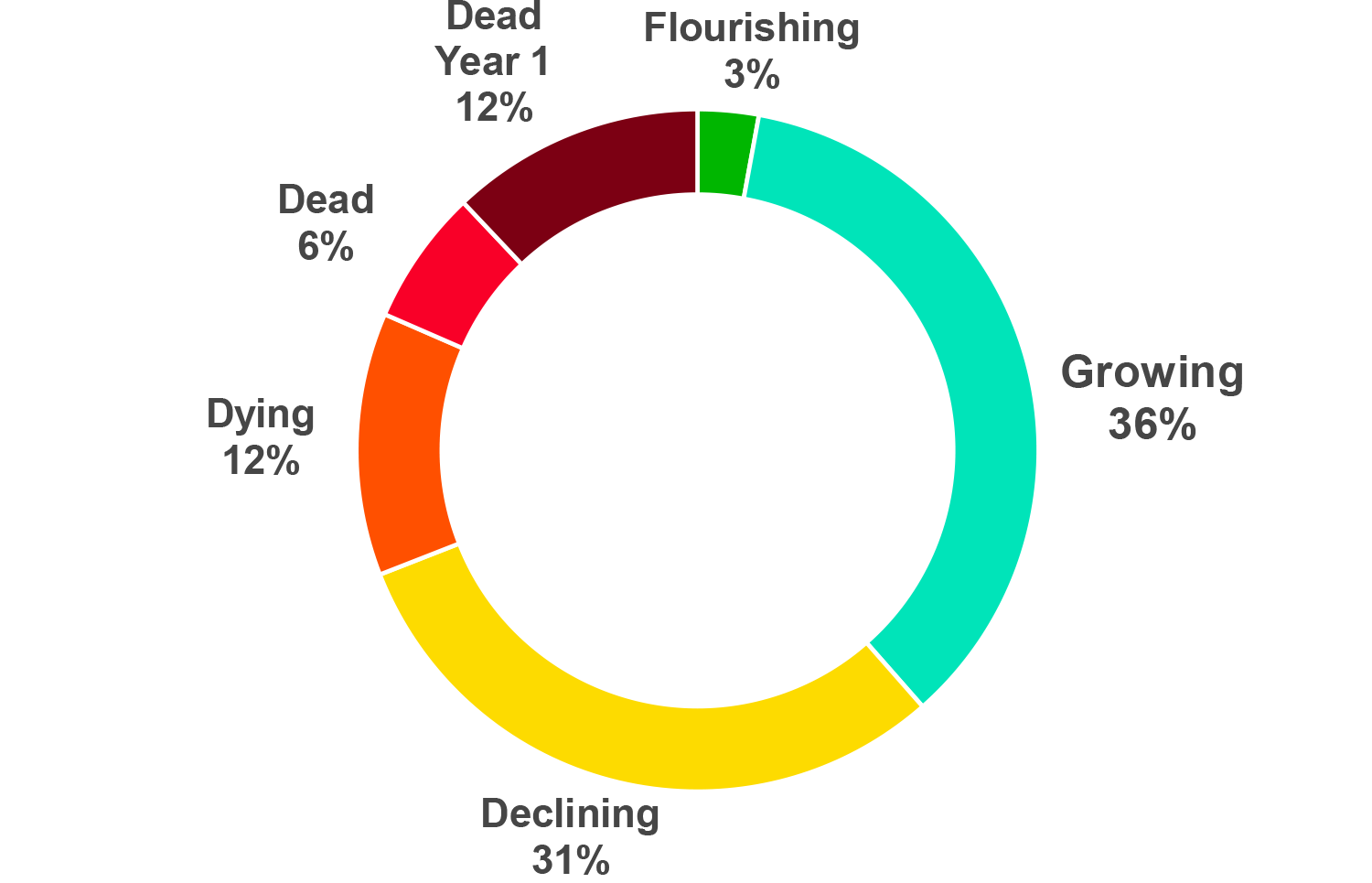So, you’ve successfully brought your innovation to market. But now is not the time to stop learning and evolving your offer if you want that innovation success to continue. Consumer behavior is changing rapidly post pandemic, and people are facing additional challenges with the war in Ukraine, inflation and the cost-of-living crisis.
Closely measuring innovation performance straight after launch can highlight if a new product requires fine tuning to avoid innovation failure, or even a change of strategy to meet changing consumer needs – and your sales targets. And if everything is going great, then effective product launch monitoring can identify what success looks like and inform your future innovation strategy.
Why most launches fail
Kantar Worldpanel finds that 16% of even the most successful first-year new products end up dead or dying by their fourth year. Far too many new product development (NPD) failures are a result of in-market problems that were not identified and corrected before the financials signaled something was wrong. The warning signs were there, but no one picked up on them in time to do anything useful. If you don’t listen to your consumers and learn how they are reacting to your new product after launch, there will be little opportunity to change course before sales weaken.
NPD Survival Rates: Year 2 performance, total grocery

Kantar, Worldpanel Division, 2022 Long-term survival rates
What undermines innovation success?
A successful new launch relies on a wide variety of stakeholders, many of which were not involved in the innovation process itself. As a result, it can be easy for in-market innovation management to become disconnected from the factors that fueled the innovation’s success in development, causing innovation performance to fall short of expectations. In our experience, these are some common causes of innovation failure:
- The original launch plans over-promised due to faulty assumptions
- The positioning was unclear and didn’t deliver on the original strategic intent
- Consumers were simply unaware of the product or didn’t know where to find it
- The innovation performance failed to deliver on consumer expectations
- The innovation is inconsistent with consumer perceptions of the brand
- Competitive launches stole the limelight and market share
- There wasn’t an accurate understanding of the product usage or target audience
You can remedy all of these disconnects if you diagnose the problem early and correctly. That requires monitoring initial consumer feedback and, if a problem does surface, digging deep to understand why, and what to do about it.
Early and effective consumer feedback pays off
The right consumer insight can have a big influence on how a new product performs, as long as post-launch research is conducted early enough.
Take, for instance, a new entrant in the plant milk category. With growth lagging, the client commissioned research with Kantar to investigate why. Two underlying problems were identified:
First, the new brand was not associated with the occasions for which it was best suited, because that is not how existing products were used. The solution was to introduce new advertising to highlight suitable occasions for the use of the brand.
Second, the brand was not getting its fair share of consideration in store because it was not located where people expected to find similar products (and where they might notice the new product while shopping for the competition). The solution was to increase the in-store signage to highlight where to find the new brand.
As a result of these actions, consumer awareness of the brand changed dramatically, boosting its sales trajectory.
Respond quickly with the right consumer insights
To respond quickly and course-correct, you need to gather the right consumer intelligence from the moment of the new launch. Sales figures alone are not the answer. By the time warning signs are apparent in the financials, it may be too late to respond.
At Kantar, we help our clients design and implement personalised innovation guidance systems that are curated using the most suitable sources of consumer insight for your brand. This ensures you have all the right information for new launch monitoring and optimisation.
The information you need might lie in existing data (brand tracking or panel) or it might require a more customised approach, from analysing digital, consumer, and shopper signals to leveraging the agile solutions on Kantar Marketplace. Which specific insight tools are used, and when, depends on the specific objectives. Ensuring a new product succeeds is as much to do with mindset as metrics; it is about staying close to the intended target audience, learning from customer feedback, and applying that learning to achieve innovation success.
Innovation Guidance Systems deliver insights throughout the launch journey

Five disciplines for post-launch innovation success
Based on our work with leading innovators around the world, we have identified five consistent practices that can help ensure the best post-launch innovation performance:
1. Face up to the challenge
Successful innovators are brave. They are never afraid to take on a challenge, improve and learn for the future. Nobody wants to hear that their latest innovation might have a problem, but it is better to know and do something to fix it, rather than simply letting things run their course.
Maybe that problem is really a bigger opportunity? More radical innovations may resonate with a few early adopters but need nurturing in the right way to appeal more widely. Creating an effective innovation guidance system can empower the innovation team to continue evolving their offer to be successful post launch.
2. Ensure people are aware
The two key determinants of a successful new launches have always been physical and mental availability. You need to know as soon as possible if product distribution or consumer awareness are weak, because both are critical to hitting sales targets.
Failure to meet distribution and awareness goals sidelines many new launches. Monitoring distribution and sales, understanding awareness and trial and tracking purchase and usage and by who will let you know if your launch is on track or recognise if an intervention is necessary.
3. Listen to your consumers
An in-depth deep dive with people who have tried the new innovation provides guidance for optimisation, course-correction, and can help identify new opportunities. How is the idea landing with consumers? How is it being used? What kind of people does it resonate with? What is preventing trial? Is the innovation driving incremental growth? How can we improve our innovation and make it stronger?
Post-launch research analysis of digital data (online search, social, and reviews) can provide actionable insights on how to amplify positive customer feedback, remedy negative feedback, and address informational needs. Qualitative ‘Power Groups’ with consumers pre-tasked to purchase and consume the product can also surface opportunities for improvement.
4. Optimise plans fast
New innovations have a limited launch window in which to course-correct, so speed is of the essence. That is when agile, on-demand research solutions can make all the difference.
Whether it is the proposition, product, packaging, media laydown, or messaging, timely consumer feedback can help you unpack what is going on and get your innovation performance back on track. If you can quickly speak to active rejecters of the new innovation to understand the barriers to purchase, you can invest in the most important factors to turn this around.
5. Learn for the future
Innovation launch failure or success: every new launch provides the opportunity to learn. But only if post-launch data is collected and stored consistently for easy access and comparison.
Does the sales trajectory compare favorably? Is brand awareness ahead of benchmarks? Is the balance between positive and negative customer feedback better than expected? A database of past innovation performance provides important context for future new product launches and strategies.
Make the most of in-market innovation management
Financials are lagging indicators of success. Fast, insightful consumer feedback can help you course-correct after launch and help make your innovation the best it can be.
At Kantar, we have access to a wide array of insight resources to help you keep a close eye on your innovation performance in-market. Our ability to deploy qualitative, social and quantitative deep dives to diagnose problems and highlight opportunities combines with our expertise in innovation, creative, commerce and media to bridge the potential disconnects between innovation development and real-world innovation management.
Get in touch to find out more and subscribe to our newsletter so you don’t miss the final article in this series which focuses on how to futureproof your innovation performance and strategy.



